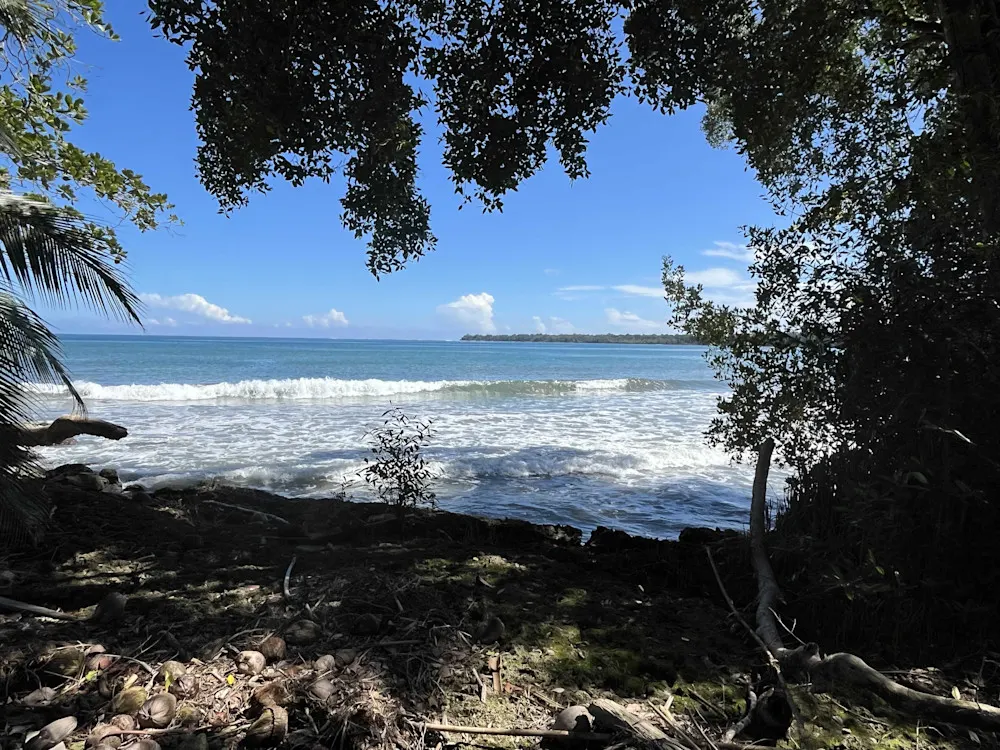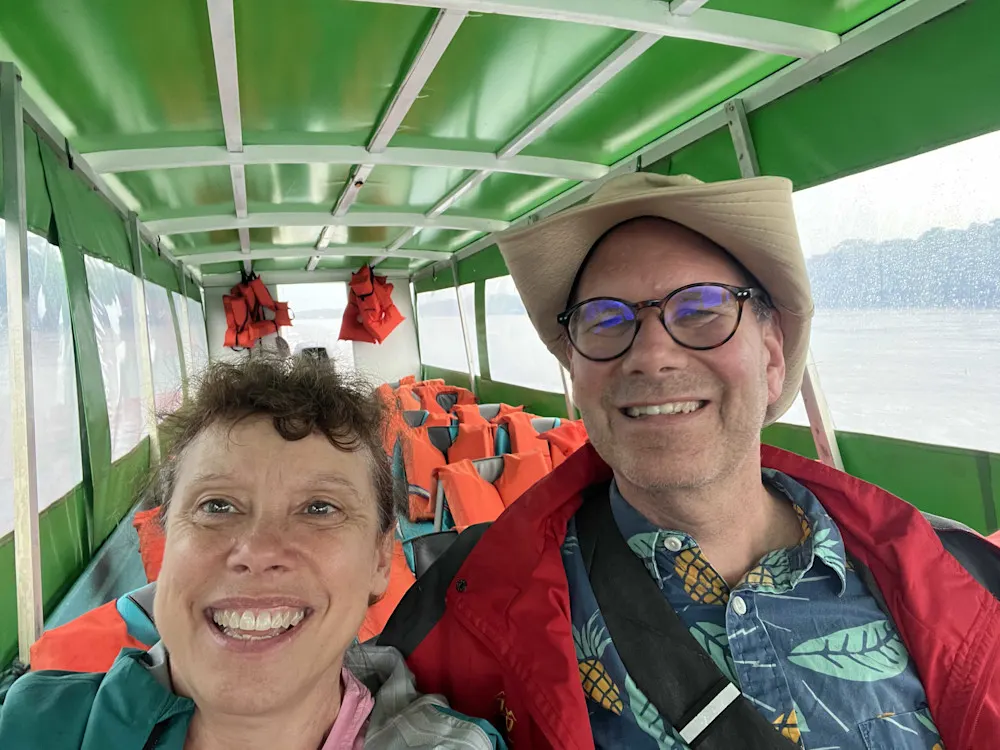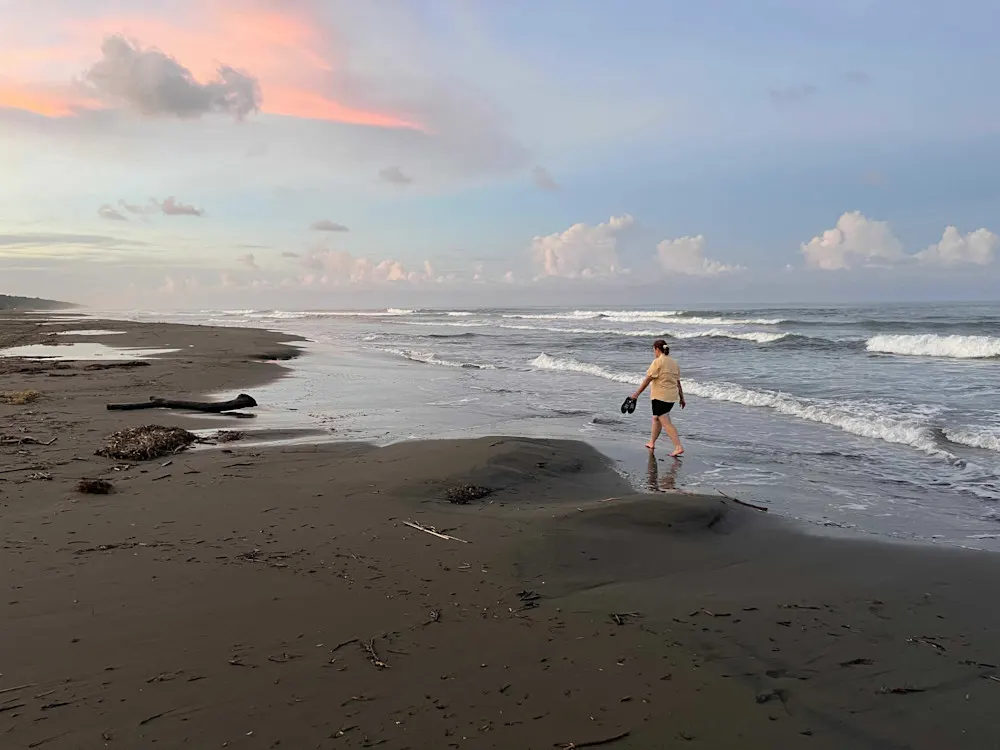Our home base for the month is a two-bedroom apartment, an eight-minute drive from Atenas in the Central Valley. Atenas is popular with expats for its ideal mountain climate and proximity to an international airport, quality healthcare, and the capital, San Jose.
During the first two weeks, we explored the Arenal Volcano area and the South Pacific town of Quepos with visiting friends and family. Despite rain from Tropical Depression Sara disrupting some plans, we enjoyed Costa Rica’s many activities.
In week three, with no visitors and no obligations, we spent time in Atenas connecting with expats before heading off in search of sunshine and adventure.
How To Move Out of the U.S.
How To Move Out of the U.S.
The policy implications of the last election impacted your retirement funds, taxes, healthcare, and more. But you can protect yourself, your family, your future. In lots of safe, warm, friendly spots abroad, you can live comfortably on a budget from $2,000-$3,800 a month (all-in—housing and extras included). We’ll show you how—and where—to go.

By submitting your email address, you will receive a free subscription to IL Postcards and special offers from International Living and our affiliates. You can unsubscribe at any time, and we encourage you to read more about our Privacy Policy.
Cahuita and the Southeastern Coast

Reaching a remote coastal town, involves a scenic four-to-six-hour drive over the mountains east of San Jose. Arriving just before dark, we checked into Casa Caribbean Coconut, a charming family hotel tucked along a quiet, unpaved road parallel to the beach. The increased humidity hit us immediately, and we were grateful for the air conditioning. Our host, Alberto, greeted us warmly, pronouncing our names as “Sheem” (Jim) and “Imey” (Amy). That night, we fell asleep to the soothing sounds of rain and howler monkeys overhead.
The next morning, refreshed and eager, we set out to explore the area’s natural beauty.
Discovering Cahuita National Park
The highlight of staying in Cahuita is its National Park, where a nature trail runs alongside a stunning beach. Entrance is by donation, typically $5 per person—a bargain for access to miles of trails and beaches. Along the trail, you can easily step out onto pristine white sand at various points, making it an ideal place to combine hiking and beach time.
Why Hiring a Nature Guide is Worth It
Hiring a naturalist guide in Costa Rica is a wise investment. Government-licensed guides are incredibly knowledgeable and typically charge $30–60 per person. We found Richard, a freelance guide, who made our visit unforgettable. Within an hour, he pointed out wildlife we would never have spotted alone, including a sloth, howler monkeys, toucans, a vine snake, iguanas, and basilisks.
After the guided tour, we enjoyed a rare rain-free afternoon relaxing under palm trees and swimming in the warmest ocean water we’ve ever experienced—a true tropical paradise.
Snorkeling the Caribbean Waters
The following day, Alberto arranged a snorkeling trip for us. Along with ten others, we boarded a small boat and headed to the reefs off Cahuita’s peninsula. The captain casually asked, “Everyone can swim, right?” before we jumped in. Although the reefs weren’t as vibrant as others we’ve seen, we encountered an impressive variety of coral, stingrays, and schools of yellow tangs. Dolphins even made an appearance during the boat ride.
Rainy Days in Cahuita
Later, the rain returned and persisted for 20 hours straight. We briefly ventured to the nearby town of Puerto Viejo for lunch, but mostly, we stayed in, savoring the sound of rain through the night. Once the weather cleared, we spent our final day strolling the beach road and enjoying the area’s relaxed atmosphere.
No Obligations
As we contemplated returning to our home base in Atenas, we realized that for the first time in years, we had no obligations to anyone else or any schedule we needed to meet. It truly felt like we were testing our retirement, and we needed to act that way.
So, instead of returning as planned, we secured a room and set out for the three-hour drive to visit the turtle nesting grounds of Tortuguero National Park, located on the northeast coast.
Tortuguero National Park
Tortuguero, located on the northeast coast, is accessible only by plane or a 45-minute water taxi. At Pavona, the embarkation point, we were met by competing water taxi operators. Fortunately, our accommodation host had notified the right company, helping us secure parking ($10/day) and round-trip tickets ($16 each) for the last two seats.
Cruising the Canals of Tortuguero
The water taxi ride itself was magical. Initially rainy, the weather cleared, and the captain rolled up the boat’s plastic curtains, offering an open-air jungle cruise. Gliding through the lush canals surrounded by dense jungle felt like stepping into another world.

The Town of Tortuguero
The remote settlement of Tortuguero is home to fewer than 2,000 residents, most of whom work in the tourism industry. The town, about a mile long, sits on a sandbar separating the Caribbean Sea from the canals of Tortuguero National Park. A single pedestrian street—just wide enough for two people—serves as the town’s main thoroughfare, lined with tour company offices, guesthouses, restaurants, and souvenir shops. Beyond a few back lanes where the locals, known as Ticos, live, lies a wide sand beach. This beach, which lends the area its name, is a nesting site for four species of sea turtles between June and October.
While staying in Tortuguero, visitors have a range of accommodations to choose from; Google lists 126 hotels and lodges in the area. Most of these are full-service resorts located outside the town, offering private water taxi transportation. We opted for a one-bedroom apartment in the heart of town. Upon arrival, a representative from Buddha House met us at the public dock and guided us about 50 yards to our home for the next two nights.
Once settled, we quickly planned our activities, eager to explore the area’s unique offerings.
Kayaking in the National Park
Nearly every visitor books a 6 a.m. guided tour of the canals by canoe or kayak. We chose a kayak tour with our guide, Eric, and relished the early morning tranquility, accompanied by only one other couple in our group. Despite the off-season and persistent morning rain, we encountered at least 20 other boats navigating the estuaries and canals in search of wildlife.
Our sightings included herons, green macaws, a sloth, spider monkeys, and even a caiman—a small, non-aggressive member of the alligator family that hides in marshy areas, recognizable only by its eyes peeking above the water. Taking a moment to soak in the stillness of the remote jungle—with only the sounds of rain on the water, the soft glide of the kayak, and wildlife stirring to greet the morning—was an unforgettable experience.
Hiking the Jaguar Trail
After changing into dry clothes and taking a nap, we ventured out to hike the Jaguar Trail in Tortuguero National Park, located at the southern end of the town’s main path. Although wild jaguars are the area’s top predators, sightings are rare. Signs at the park entrance offer guidance on what to do if you encounter one, but our first challenge wasn’t a jaguar—it was ankle-deep puddles covering the trail. Looking ahead, we realized these puddles were the rule, not the exception.
Retracing our steps, we found a nearby private home just outside the park entrance with a handmade sign advertising “Boots for Rent.” For $4 each, we rented calf-high black rubber rain boots, which allowed us to tromp through the puddles and mud with ease, feeling like kids again.
We explored the trail for about an hour, occasionally stepping onto the beach to see nesting sites for turtles. Along the way, we spotted great curassows and small agoutis darting across the path. The highlight of the hike was a spider monkey, perched just ten feet from the trail, contentedly munching on leaves. Unbothered by his audience, he continued his lunch while we watched in awe.
Week Three Insights
Language Skills: English is more widely spoken on the Caribbean coast due to its Jamaican roots, but basic Spanish is still vital. Jim’s confidence in speaking Spanish has grown, though miscommunications happen—like ordering four drinks instead of two during happy hour. Amy, while adept at understanding the gist of conversations, relies on a Spanish-speaking companion.
Hand Gestures: A universal tool for traffic—putting a hand out the car window to merge works surprisingly well. A thumbs-up of thanks is often met with a friendly honk.
Our Takeaway from Cahuita and Tortuguero

As we wrapped up week three on Costa Rica’s Caribbean coast, we reflected on whether this part of the country could be a retirement destination for us. While beautiful, it’s remote from the amenities we’d want in retirement. We also realized that while we enjoy beaches for vacations, beachside living has never been our dream. Although the weather was pleasant at the end of November, the summer season brings intense heat and humidity. Air conditioning is both expensive and confining, making it less appealing for full-time living. Returning to our home base in the Central Valley, the cool mountain air was a welcome refresh.
We’re gradually adopting a retirement lifestyle while staying socially active. This week, we shared lunch with a few retired expats in the Atenas area. On Thanksgiving, we joined a local expat-led tour of the feria (farmer’s market) to learn about Central American fruits and vegetables and how to cook with them. While Amy attended a women’s expat group at a local Polish restaurant, Jim enjoyed the town square, reading a book and striking up conversations with friendly passersby.
Next week, we’ll explore Southern Pacific beaches and continue our quest to spot scarlet macaws. Stay tuned for our week-four update!
Follow more of our adventures on our Facebook page, Travels with Amy and Jim!
Get Your Free Costa Rica Report Here
Get Your Free Costa Rica Report Here
Learn more about Costa Rica and other countries in our daily postcard e-letter. Simply enter your email address below and we’ll send you a FREE REPORT - Explore the Old World in Laidback Costa Rica.

By submitting your email address, you will receive a free subscription to IL Postcards and special offers from International Living and our affiliates. You can unsubscribe at any time, and we encourage you to read more about our Privacy Policy.
